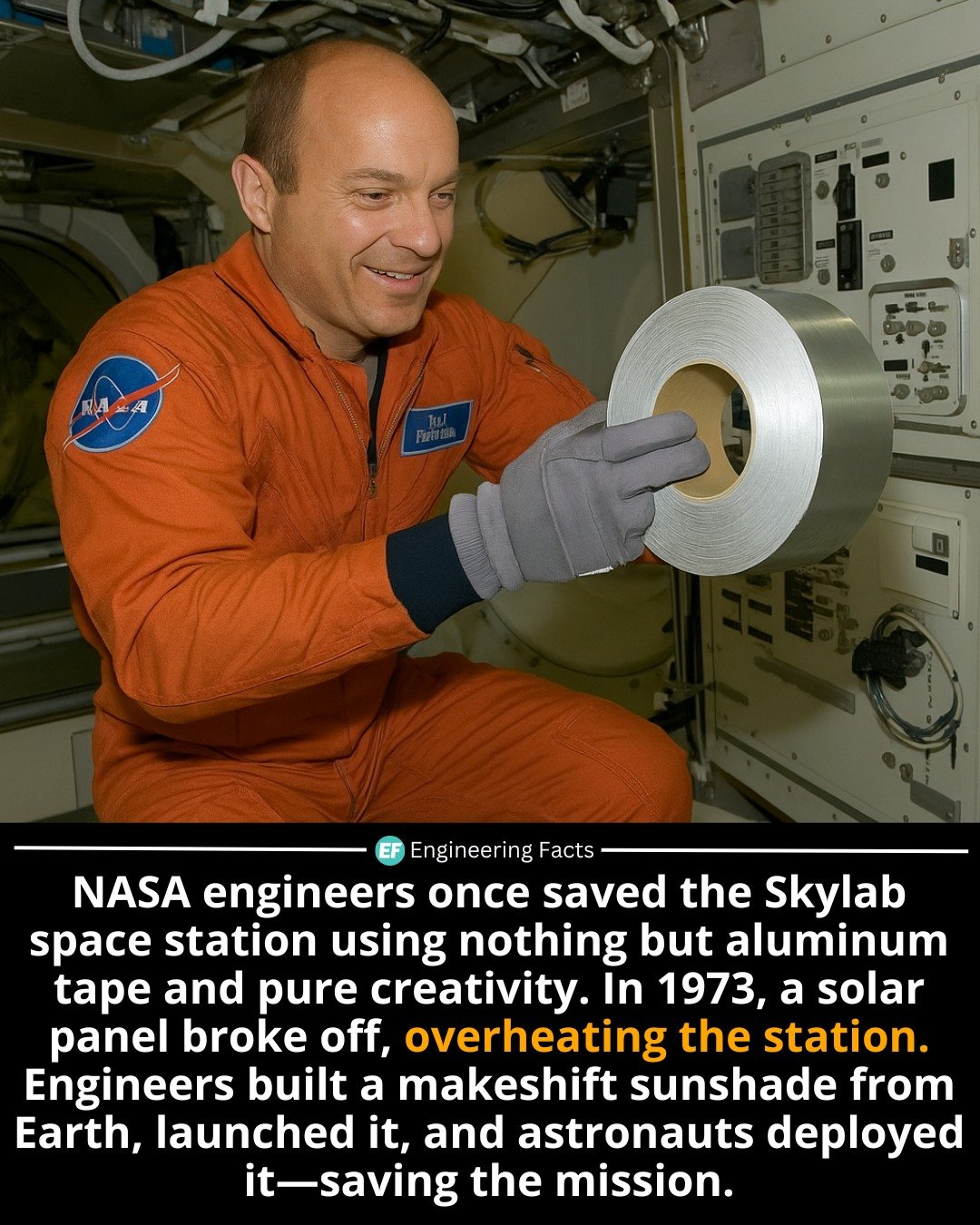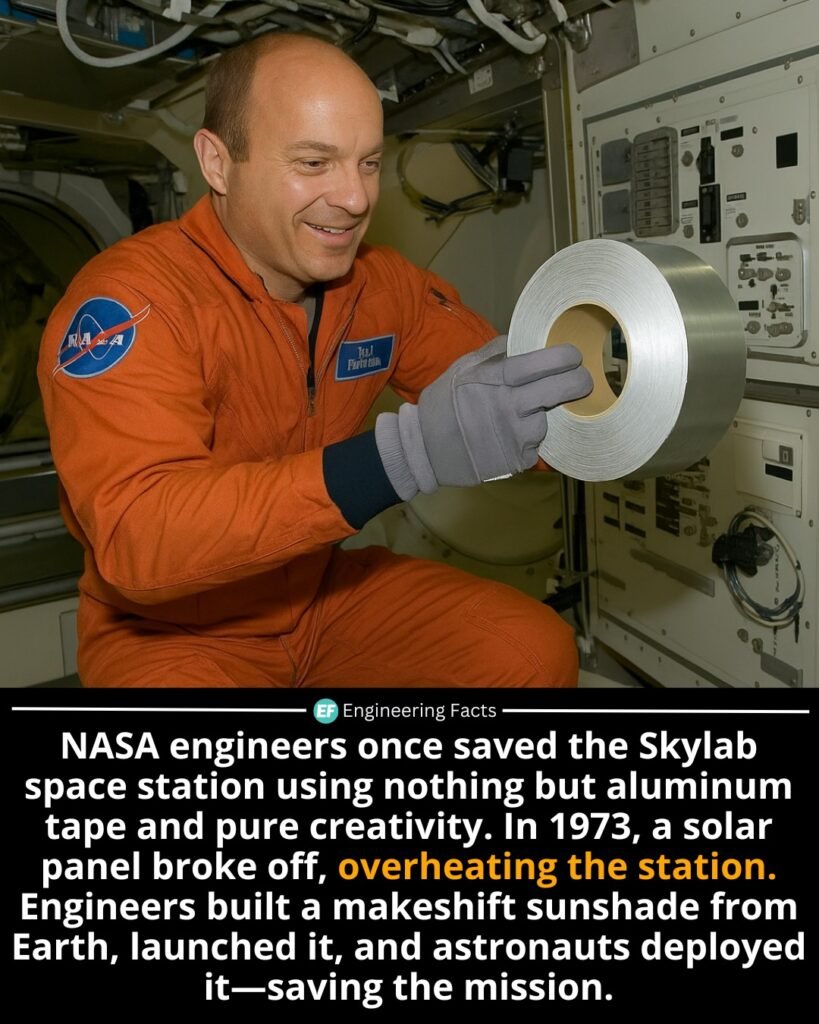[ad_1]
In 1973, NASA’s Skylab—America’s first space station—faced a critical threat just moments after launch. A meteoroid shield and one of the solar panels tore off during ascent, exposing the station to extreme solar heating and disabling power systems. As internal temperatures soared past 126°F (52°C), mission engineers back on Earth sprang into action. Among them was Jack Kinzler, head of NASA’s Technical Services Center, who led the emergency design of a collapsible sunshade—nicknamed the “parasol”—using aluminum tape, telescoping rods, and fabric.
This improvised thermal shield was launched aboard Skylab 2 with astronauts Pete Conrad, Joseph Kerwin, and Paul Weitz. Once in orbit, the crew manually deployed the parasol through a small scientific airlock—dramatically reducing temperatures inside the station and enabling full mission operations to resume. This legendary act of engineering ingenuity not only saved Skylab but cemented the legacy of ground-crew problem solving under pressure.
,NASAEngineering ,Skylab1973 ,SpaceInnovation
Stay Connected with NewsRT:
For the latest headlines and urgent updates, visit our Breaking News section. If you want to stay informed about global affairs, our World News page brings you top stories from around the world.
For entertainment lovers, check out our Entertainment category to catch up on celebrity news, movies, and trending shows. Sports fans can follow live scores and in-depth match reports in our dedicated Sports section.
Stay on top of your health with expert insights and wellness tips on our Health page. For the latest financial updates, market trends, and stock analyses, visit our Stock Market section.
Don’t forget to explore our homepage for more top stories, exclusive reports, and real-time news updates curated for you.
